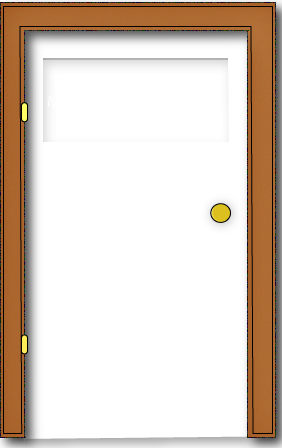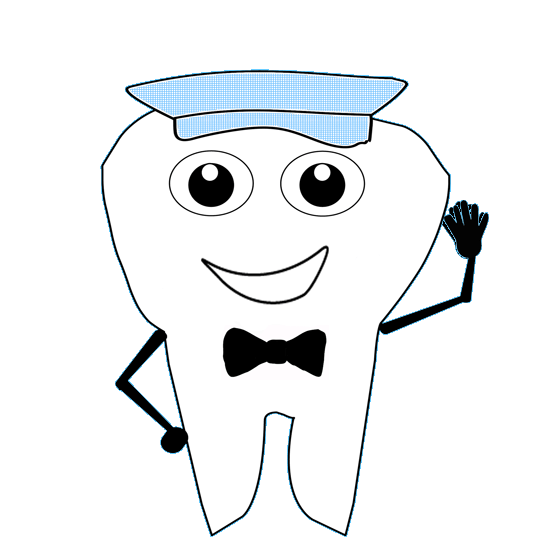When Should I Schedule My Newborn’s First Visit?
We typically recommend that you visit us once the first tooth erupts or no later than than your baby’s first birthday. In our experience, making this first appointment is the best thing you can do to ensure your child maintains proper oral health. We encourage both parents to be present during their child’s first dental visit.
The American Academy of Pediatric Dentistry recommends a “Dental Home” begin no later than one year of age. This recommendation is asking for a relationship between parents, child and Pediatric Dentist be established that would be inclusive of all aspects of oral health. To be specific, a discussion of the following would ensue: brushing, nutrition, tooth eruption, developmental milestones, caries risk assessment and anticipatory guidance.
In initiating this “Dental Home” early it is felt that we can truly prevent the caries process and guide you and your child to many years of being caries free.
Depending on our findings at the initial visit will determine on what frequency your child will return for routine prophylaxis, fluoride treatments and radiographs. The normal recall is for every six months but it may be recommended to come more frequently or less.
What Will My Child’s First Appointment Consist Of?
This early appointment will prove so valuable for both you and your child! First, a review of your child’s medical and dental history will be performed and collected. Next, we will perform an intraoral examination that screens for decay, proper development of jaws and teeth, and the presence of other oral diseases. If necessary, a “Caries Risk Assessment” will be obtained.
During your child’s first appointment, your family will be provided valuable information on how you can ensure you’re doing the best job at home of correctly maintaining your child’s oral hygiene. You will also receive personalized instructions on how best to clean your child’s teeth, what products are right for your baby, proper nutritional guidelines, recommended fluoride levels, and learning what to do in the event of an injury to your child’s teeth. Based on our findings, “anticipatory guidance” and periodicity of visits will be discussed.
How Should I Clean My Infant’s Mouth?
Whether your child is breast or bottle fed, be sure to clean properly after every feeding. To do so, wipe the gum pads, new teeth, under the tongue, and inside the cheeks, with a clean washcloth, moist gauze pad, or gentle finger. Be sure to also inspect the mouth, taking care to look for any significant changes in the color or depth to the tooth surfaces and be sure to report such findings to Dr. Ruelf upon detection. Once the teeth are visible, use a moist, soft bristle brush to begin cleaning them.
How Can I Prevent Tooth Decay While Feeding My Child?
It is important to remember that tooth decay is caused when bacteria in the mouth are exposed to sugar. Prolonged exposure of an infant’s teeth to liquids that contain sugar, such as both bottle and breast milk, formula or sweetened drinks, can lead to tooth decay.
Therefore, your child should not sleep with a bottle containing any of these liquids. If your child does need a bottle to sleep, fill it with water only. Care should be taken after each feeding to cleanse the mouth of residual sugars. Also, remember that the bacteria which cause cavities can be spread by sharing utensils, pacifiers, toothbrushes, or any other potentially contaminated surface exposed to your child’s mouth.
How Can I Relieve The Pain My Child Experiences When Teething?
During teething, some babies may express discomfort due to soreness or tenderness of the gums. You can relieve this pain by gently rubbing your cleaned finger or washcloth over the affected area. You may also provide your child a clean teething ring that can be chewed to provide a similar degree of relief. If your child still experiences discomfort, contact your physician or Pediatric Dentist.
If your child experiences an unusually high or persistent fever during teething, call your physician.
 Parental Instruction
Parental Instruction
There are many positive benefits in establishing a strong dental relationship between parents, children, and their pediatric dentist within the first year of childhood. For parents, the opportunity to learn how to best care for their child’s teeth comes from early consultation with their pediatric dentist. This instruction may provide recommended fluoride increases or decreases based on current intake, how to properly clean an infant’s teeth, a caries risk assessment, treatment plan explanations, or individualized prevention strategies.
Building Dental Homes
There are many adults today who fear making dental appointments. Resultantly, these individuals often needlessly suffer severe dental problems that could have been easily prevented with routine dental care. Reducing the potential for dental phobia is therefore a core concern for our dental team. A fundamental goal within our practice is fostering the kind of trusting, educational, inquisitive, and personal environment that helps preserve healthy smiles throughout life. Establishing a dental home within the first year of childhood is also an important step in predicting and managing growth and development issues, planning for emergency dental trauma, and referring to other dental specialists or healthcare providers when necessary.
Learning How to Brush & Floss
When teaching their young children how to brush and floss, parents should spend time first reviewing these techniques with their pediatric dentist. There are two important reasons why this is the case:
1) Surprisingly, many adults do not brush and floss as effectively as they should. This is often due to shortcuts and errors made over time that eventually become ineffective or even damaging habits.
2) When parents discuss proper brushing and flossing techniques with their pediatric dentist, it ensures that they will provide their child with the same instructions provided during their child’s appointment. Because young children learn through repetition, this provides the child with a consistent, clear, and simplified practice that will be less likely deviated from over time.
.
.
Early Childhood Caries
This pattern of dental decay commonly appears in children exposed to prolonged fermentable foods and/or liquids. Extended bottle and/or breast feeding times are major contributing factors. If left untreated, early and severe childhood caries may subsequently result in improper tooth development or space maintenance (space loss) concerns. Additionally, rampant decay which results in tooth loss may negatively impact the development of a child’s speech patterns and/or ability to properly feed.
Space Loss
Rampant decay, accidental injuries, medical conditions, and poor oral hygiene often lead to premature tooth loss. The formation of these spaces may lead to improper chewing techniques, abnormal speech patterns, and misaligned teeth. Pediatric dentists are trained to diagnose the severity and appropriate treatment therein. Common solutions include dental restorations and oral appliances designed to maintain the space necessary to ensure the proper alignment and formation of the developing dentition.
Thumb/Finger Sucking
Thumb and Finger Sucking is a habit which typically develops by the age of six months. The frequency, positioning, duration, and intensity greatly impacts the growth and development of facial and dental structures. Most children outgrow this pattern by the age of four. However, if the habit continues to occur past the age of four, it may begin to affect the alignment of the teeth, the shape related to the roof of the mouth, and/or the position of the upper and lower jaw. In cases such as these, pediatric dentists may fabricate oral appliances that are cemented into place for approximately six months to help eliminate the habit.
.
How can I know whether my child’s teeth are growing in a normal pattern?
Permanent teeth will begin to erupt at about five or six years of age. Some permanent teeth will replace the position of baby teeth and others, such as the molars, will grow in position previously unoccupied. This stage of having both primary and permanent teeth is referred to as the “mixed dentition stage” and usually continues till around twelve to fourteen years of age.
Below, you will find links to eruption charts, which will help give you some idea as to when these teeth appear. By attending regular check-up appointments with a certified pediatric dentist like Dr. Ruelf, parents can provide their children with the best assurance that their teeth are undergoing normal and healthy development.
.
Fluoride Treatments
Fluoride has been demonstrated to be safe and highly effective. Its role in the prevention of tooth decay is in remineralizing and physically hardening the outer enamel layer of the tooth. Fluoride treatments provided within the pediatric dental office are of a higher concentration than what is found in toothpaste or rinses. Periodic and professionally applied fluoride treatment can reduce the incidence of caries in children.

Sealants are actually clear in color, but appear white in this figure for demonstration purposes only.
Sealants
While not all molars present with such deep and narrow crevices, those that do often stand to benefit from the placement of a protective material referred to as dental sealant.
.
.
Pit & Fissure Caries
The common presence of deep and narrow pits and fissures on the surfaces of children’s teeth often creates niches where food, debris, and cavity-forming bacteria bind and cannot be easily removed with at-home brushing.

Deep pits and fissures, which can be difficult to reach through regular brushing and flossing, are the most common site of childhood caries.
Persistent Tongue Thrust
Tongue thrusting is part of the normal swallowing pattern for an infant in which the tongue is placed against the teeth in the front of the mouth. Generally, between the ages of eight and twelve, children will outgrow this swallowing pattern and develop a swallowing pattern characteristic to adults. A persistent tongue thrust that exceeds the normal transition period can contribute to a deformity in the child’s bite. Unfortunately, parent’s are often completely unaware that this problem exists.
Pediatric dentists are trained to detect persistent tongue thrusting. Correction may involve teaching the patient how to swallow through a variety of exercises, myofunctional therapy or the placement of appliances to deter the behavior.
Space Loss
Around the ages of five and six, children’s primary teeth are shed while permanent teeth begin to fill the space they left behind. Early tooth loss or prolonged retention of the primary teeth must be routinely monitored to ensure adequate spacing exists for the developing permanent teeth.
.
Does my child need braces?
In most cases, the question would be better asked….Will my child benefit esthetically from having braces? On every visit to our office we are assessing your child based upon both their current and future development. Orthodontic treatment is necessary when an excessive overbite, underbite, or crowding of the teeth is present. At any point we are available for consultation as to your child’s orthodontic care. You may also learn more about this topic by visiting our library’s first floor (scroll below).
“Invisalign” is a series of clear aligners that move teeth gradually into the desired position. Dr. Ruelf can evaluate for malocclusion to determine whether or not your child may be a candidate for “Invisalign”. Insurance providers generally cover “Invisalign” at the same benefit rate as traditional braces.
At What Age Is Bleaching Safe?
Leading authorities agree that bleaching will not damage the teeth despite the age of the patient. We recommend that the patient be at least thirteen years of age with all permanent teeth excluding wisdom teeth erupted. Depending upon the degree of “whiteness” you want to obtain, we would encourage one of the following three bleaching techniques.
Over the Counter Bleaching Products
It is important to understand that for a bleaching technique to work it must stay in contact with the teeth for a prolonged period of time. “Crest White Strips” meet this criteria. Follow the directions explicitly that are given with the product.
Custom Tray Bleaching
Alginate impression material is used to make a mold of both the upper and lower jaws. Through several different processes custom clear “trays” are made in which the patient will place a bleaching solution. The best method of bleaching is to wear the trays for two thirty minute intervals each day for ten to fourteen days. At the end of the time period we assess the degree of “whiteness” achieved.
The Zoom process
This technique is done here at the office. The teeth are isolated and then a bleach is applied. The bleach is further activated by a bright “white” light for fifteen minute increments. Depending on the desired “white” will determine how long the process will take.
The advantages of the Zoom process over the other two methods is that it is done in one sitting. The results are more predictable and seem to be longer lasting.
New Challenges and Responsibilities
During the adolescence period, it is critical that personal oral hygiene practices are properly maintained. Along with increasing independence, changes in diet, lifestyle, oral microflora, and physical condition pose new challenges and risks to adolescents . In addition to continued caries susceptibility, the adolescent years pose an additional risk of periodontal disease development.
Esthetic Considerations
Malocclusion
Any number of changes in the position of the teeth/jaw during adolescent development may not only lead to emotional concerns related to a patient’s appearance, but functional concerns as well. In addition to a professional diagnosis, it is critical that open and honest discussion, patient readiness, and overall treatment plans are taken into full consideration before advancing directly to orthodontic care.
Discolored Teeth
Tooth discoloration may be caused by a variety of factors. Often, these factors include natural aging, the consumption of staining substances, excessive fluoride intake, or traumatic injury to the tooth. Somewhat less commonly, tooth discoloration may be the result of exposure to certain antibiotics during tooth development or underlying genetic conditions. Due to the wide variety of factors, it is important that a pediatric dentist first determines the likely cause of discoloration before deciding upon the best method of treating it.
Third Molars
Third molars may cause acute or long-lasting problems for adolescent patients. Depending on the manner in which these teeth erupt, the problems which may arise include caries and/or potential infection of the surrounding tissues. Therefore, clinical observation of third molar development is a critical evaluative measure during this age.
Recommendations
In addition to continued oral hygiene, dietary management, and professional evaluation, the clinical removal of excess plaque through is of increased need during this stage of development. In addition, sealant placement/replacement, proper fluoride treatments and routine radiographs are of critical importance in preventative care.
.
Hormonal changes during pregnancy can result in inflammation, tenderness, and swelling of the gums.The incidence and severity of this can be decreased by excellent oral hygiene (brushing twice a day, flossing at least once a day, and choosing healthy snacks) and regularly going to your dentist for exams and cleanings during your pregnancy. This means having dental visits at least every 6 months.
Many mothers don’t realize that they can transfer their cavity-forming bacteria from their own mouth to their infant/child’s mouth. It is important not to share drinking cups, eating utensils, or bites of your food. In other words, mothers with cavities can spread unhealthy bacteria to their children, setting them up for dental infection and pain. By remaining conscientious of these facts mothers can help minimize their children’s predisposition to cavities.
Please call our office immediately at 813-264-6000 if your child is currently experiencing a dental emergency.
In the event you are uncertain as to whether your child is experiencing a true dental emergency, or if you would like to know more about how to best proceed with a particular type of dental emergency, feel free to use the following information provided.
Knocked Out Teeth
If your child’s tooth has been knocked out of the mouth entirely, first find the tooth and rinse it with water (without soap). Be sure to only touch the crown of the tooth (the part you can see when the tooth is properly positioned in the mouth). If you can, try to place the tooth back in its socket and hold it in place with a clean towel or cloth. If you can’t return the tooth to its socket, place it in a clean container with milk. In either case, call us immediately and/or go to the hospital. Though primary (baby) teeth are generally not re-implanted, it is possible to save a permanent (adult) tooth if immediate action is taken. If one of your child’s primary teeth has been knocked out, you will want to schedule a visit to our practice as soon as possible so that Dr. Ruelf can ensure there are no fragments of tooth remaining.
Toothaches
If your child complains of a toothache, rinse their mouth with warm water and inspect the teeth to be sure there is nothing caught between them. During this inspection, also check for the presence of swelling. You may use a cold compress and/or pain relievers to ease the pain. Do not apply heat or any kind of aspirin or topical pain reliever directly to the affected area, since this can cause damage to the gums. Schedule an appointment with our office immediately.
Broken Jaw
If you know or suspect your child has suffered a broken jaw, use a cold compress to reduce swelling. Call us and/or go to the hospital immediately. In many cases, a broken jaw is the result of a greater injury to the head. These types of injuries can be dangerous, and potentially, life-threatening. Immediate action is therefore necessary.
At Tooth Engineering, we are honored to work with children from a diverse range of backgrounds. Dr. Ruelf is uniquely qualified to provide dental care to children who require specialized medical care.
We commonly provide individualized treatment plans to accommodate children with:

-ADD/ADHD
-Anxiety
-Autism
-Cleft Lip/Palate
-Congenital Disorders
-Diabetes
-Down Syndrome
-Epilepsy
-Cerebral Palsy
-Sensory Impairment
If you have questions and/or concerns regarding dental care for your child, please don’t hesitate to contact us at (813) 264-6000.





